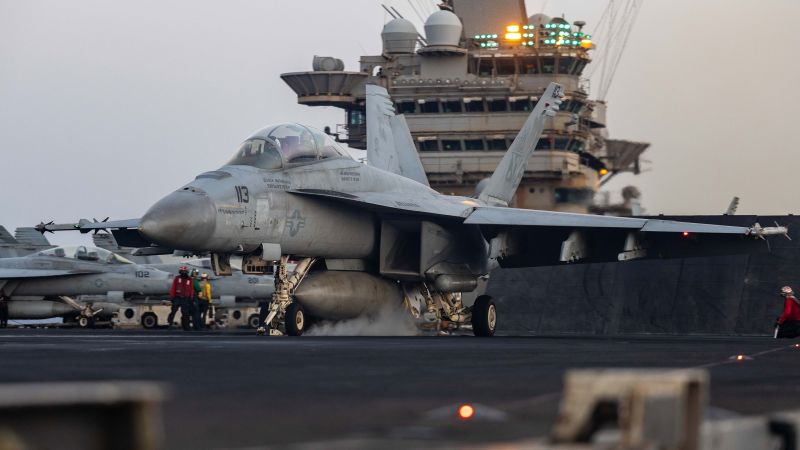Recently, the United States Navy experienced another incident involving the F/A-18 Super Hornet fighter jet. This aircraft, part of the USS Harry S. Truman aircraft carrier group, went down in the Red Sea, marking the second such loss in just over a week. According to reports from various sources familiar with the situation, this event raises significant concerns about the operational safety and the potential for further escalation in the region.
The details surrounding the incident remain somewhat unclear as investigations are still in progress. Preliminary findings from eyewitness accounts indicated that a failure during the landing approach on the carrier might have been a contributing factor. As a result, both the pilot and the weapons systems officer were forced to eject from the aircraft. Fortunately, they were promptly rescued by a helicopter and, though they survived the ordeal, both sustained minor injuries. This sequence of events emphasizes not only the dangers inherent to naval aviation but also the successful response of recovery operations.
In a separate but potentially related development, a faction known as the Iran-backed Houthi rebel group reportedly targeted the USS Harry S. Truman with gunfire just a day prior to the incident involving the fighter jet. This attack occurred despite an announcement from President Donald Trump, stating that a ceasefire had been brokered with the group earlier that same day. The connection between these two occurrences is still uncertain, leaving military analysts and officials to speculate on the nature of recent tensions in the Red Sea.
The Office of the Secretary of Defense has opted to defer questions about these troubling incidents to the Navy and U.S. Central Command (CENTCOM). As of this moment, CNN has reached out to both entities for their official comments, but further information has yet to be publicly disclosed.
This latest mishap comes closely on the heels of another incident where an F/A-18 from the Truman fell overboard last week. Initial reports suggested that the aircraft’s loss might have been due in part to the carrier’s sudden maneuvering to evade incoming fire from Houthi forces, leading to the unfortunate incident where the fighter jet ended up in the sea.
The financial implications of losing a single F/A-18 fighter jet are significant, with each unit valued at more than $60 million, according to Navy sources. Taken together with the operational challenges facing the USS Harry S. Truman and its air wing, these events present a serious concern for military planners.
U.S. naval assets operating in the Red Sea have been frequently caught in crosshairs as the Houthis ramp up assaults on maritime shipping routes that have historically been vital for international trade. In early 2024, a U.S. destroyer had to resort to utilizing its Phalanx Close-In Weapon System to thwart an incoming Houthi-fired missile, showcasing the heightened risks faced by military vessels in this area.
The USS Harry S. Truman has not only incurred these recent pilot and aircraft losses but has a history of complications in the region. In December, another incident occurred involving an F/A-18, which was mistakenly targeted by the USS Gettysburg, resulting in a crash into the Red Sea. Remarkably, both aviators managed to eject safely during that situation. Adding to the carrier’s troubled history, an incident in February involved a collision with a commercial vessel near Egypt, leading to the replacement of the carrier’s command with Captain Christopher Hill taking over for Captain Dave Snowden.
As investigations continue, the military community is left pondering the implications of these events on U.S. operational readiness, international relations, and the ongoing conflict involving the Houthi rebels in Yemen. The evolving military landscape in the Red Sea remains a point of concern as military assets face an increasingly complex and dangerous operational environment. This story will be updated as new information comes to light, underscoring the ongoing challenges faced by U.S. Naval forces in the volatile region.



